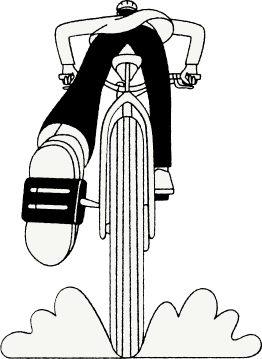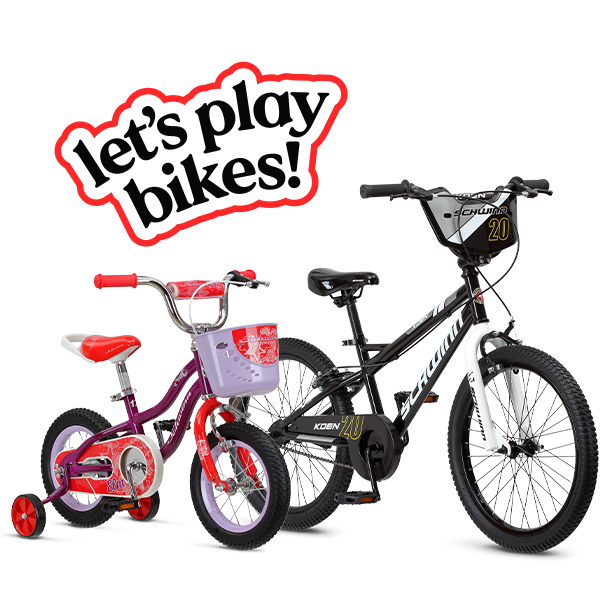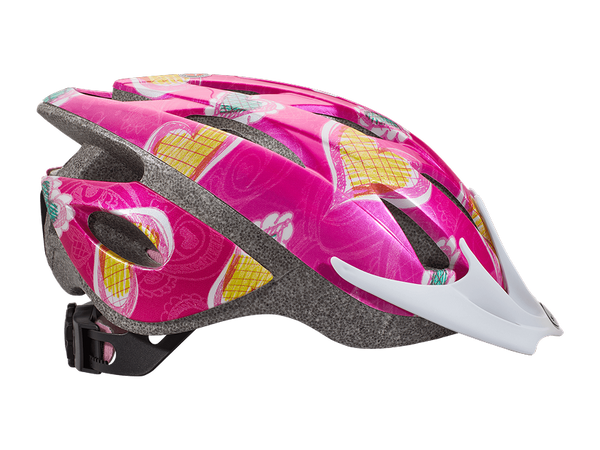Got a flat tire? It happens to all of us sooner or later. Luckily, repairing or replacing an inner tube is one of the most common bicycle maintenance tasks, and it’s easier than you might think. Whether you spotted the flat at home or got stuck mid-ride, this step-by-step guide will walk you through the whole process. With a few supplies and a little patience, you’ll be back on the road in no time. These steps work for more than just bikes—you can use them to fix a flat on a scooter or tricycle, too. Ready? Let’s dive in!
What you'll need
- An adjustable wrench (if your bicycle does not have quick-release wheels)
- Tire levers
- A tube patch kit, or replacement tube
- A bicycle air pump
Remove the wheel from the bike.
Taking the wheel off is your first step. The process looks a little different depending on which wheel has the flat and what type of bike you have. Front wheels usually slide out easily, but rear wheels and hub-drive electric bikes can take a little more work. We’ve broken down all the steps in our wheel removal guide so you can follow the process for your bike.

Remove the deflated tube.
- Deflate the tube completely. Remove the valve cap and press down on the center pin to release the air.
- Removing the tire can be a little tricky, but tire levers make this step much easier and are included in many bike repair kits. Locate the valve stem, and start on the opposite side of the tire so you don’t damage it. Wedge the flat side of the tire lever between the rim and tire.
- Pry the bead (edge of the tire) up and over the rim, then hook the lever onto one of the spokes to hold it in place.
- Use a second tire lever to repeat the process a few spokes away. Once a section of tire bead is free, continue sliding the second lever around the tire to unseat the rest of the bead, just like unzipping a jacket. To change a flat, you only need to remove one side of the tire from the rim.
- Pull the valve stem out of the rim hole first, then remove the rest of the tube. Watch for debris that may have caused the flat.
Find the cause of the flat.
Once the tube is out, you’ll want to find out what caused the puncture in the first place. Otherwise, you might puncture the new tube right away.
- Check the outside of the tire for anything that may be stuck into the tread. If you find something, remove it and check if the tube has a puncture in that same spot.
- Give the inside of the tire an inspection also, carefully running your fingers along the inside of the casing. Move slowly since the object you are looking for may be small and sharp.
- If nothing obvious shows up, look at the tube itself. Check around the valve stem for tears. Look for any spokes on the rim that may be sticking out or causing a pinch. Hard-to-find holes can be located by submerging the tube in water and looking for air bubbles.

Repair or replace the tube.
Repairing the tube:
As long as the original tube is still in good condition and the hole is small enough, you may be able to repair the tube. You’ll just need a tube patch kit for this step.
- Lightly sand or scuff the area around the hole to help the patch adhere.
- Press the stick-on patch firmly over the hole and hold it in place for a minute.
- Let the adhesive cure for a few more minutes before reinstalling.
Replacing with a new tube:
If you’re out on the go, it’s often easier to replace with a new tube and deal with repairing the old one later. A new tube also offers peace of mind, and could even upgrade your standard tube to one with a self-sealing gel inside that helps prevent flats in the future.
When you’re purchasing a replacement tube, just match up the diameter and width numbers on the side of your tire—they’re both important to make sure the tube will fit properly. It’s a good idea to carry a spare tube with you while you ride; under-seat storage bags make it easy to stash a tube, tire levers, and a tool kit on your bike without getting in the way.

Place the tube and tire onto the wheel.
- Use your bike air pump to partially inflate the tube. Add just enough air to give it some shape—this helps with the installation, and confirms that the tube will hold air.
- Insert the valve stem straight through the hole in the rim. Make sure the valve sits upright to prevent damage.
- Starting from the valve stem, gently push the rest of the tube into the tire.
- Opposite from the valve stem, start pushing the tire bead inside the rim. Be careful not to pinch the tube between the tire and rim.
- Continue working the bead into the rim, in both directions around the wheel at the same time. It helps to squeeze both sides of the tire together, or you can use your tire levers again for extra leverage. It starts easy, but it will get progressively harder as you go. Keep at it and take a moment to celebrate the moment the final section of bead pops into place!
- Inflate the tire slowly. As you inflate, use your hands to feel for any bulges, check for spots where the tube might be pinched, and make sure the valve stem stays aligned in the rim.
- Inflate to the recommended pressure (PSI) marked on the side of the tire.
Reinstall the wheel
Almost there! Putting the wheel back on is basically just reversing the steps you took to remove it, but there are some details you need to pay attention to. The exact steps will vary depending on your bike, so hop back to our guide on how to remove and reinstall a bike wheel for the detailed instructions.
High five, you did it! With your tube fixed, tire reinstalled and inflated (plus a well-earned sense of accomplishment), you’re ready to roll.
Need help or have questions about your specific bike? Just reach out through our Contact Us page and we’ll give you a hand. Happy riding!





